Welcome to the majestic boundaries of Kashmir, a tapestry of cultural diversity, mirrored vividly in its dressing style.
Home to a mosaic of traditions and faiths, including Hinduism, Islam, and Buddhism, Kashmir boasts a rich linguistic heritage, with Phari, Kashmiri, Urdu, and Ladakhi languages in its valleys.
However, it’s the enchanting Kashmiri dressing style that truly captures the essence of this region. Renowned for its exquisite embroidery and intricate designs, Kashmiri attire reflects the artistry and warmth of its people.
Moreover, each meticulously crafted garment celebrates the region’s cultural heritage and serves as a practical shield against its cold climate. Further, from vibrant shawls to intricately patterned phirans, every piece of clothing embodies the soul of Kashmir, adding a layer of charm to its breathtaking landscape. Embrace the allure of Kashmir’s dressing style, where tradition meets timeless elegance in every stitch.
1. History of Traditional Dresses of Jammu & Kashmir

The traditional attire of Jammu & Kashmir, steeped in history and cultural significance, is a testament to the region’s diverse heritage. One of the most iconic garments is the ‘pheran’ paired with ‘poots,’ traditionally worn without a lower garment.
This unique style resonated beyond Kashmir, as neighboring regions like Hunza and Nagar also embraced similar dressing customs until the late 19th and early 20th centuries, respectively.
However, as influences traversed regions, the Punjab region’s loose ‘suthans’ (shalwars) and ‘churidar pajamas’ gained popularity in Kashmir by the latter part of the 19th century.
These garments added variety to the Simple Kashmir dressing style and reflected the cultural amalgamation prevalent in the region. The evolution of Kashmiri attire mirrors the intricate tapestry of its history, blending tradition with external influences to create a distinctive and timeless fashion statement. Further, you visit monument of Jammu and Kashmir.
2. About Kashmiri Costume
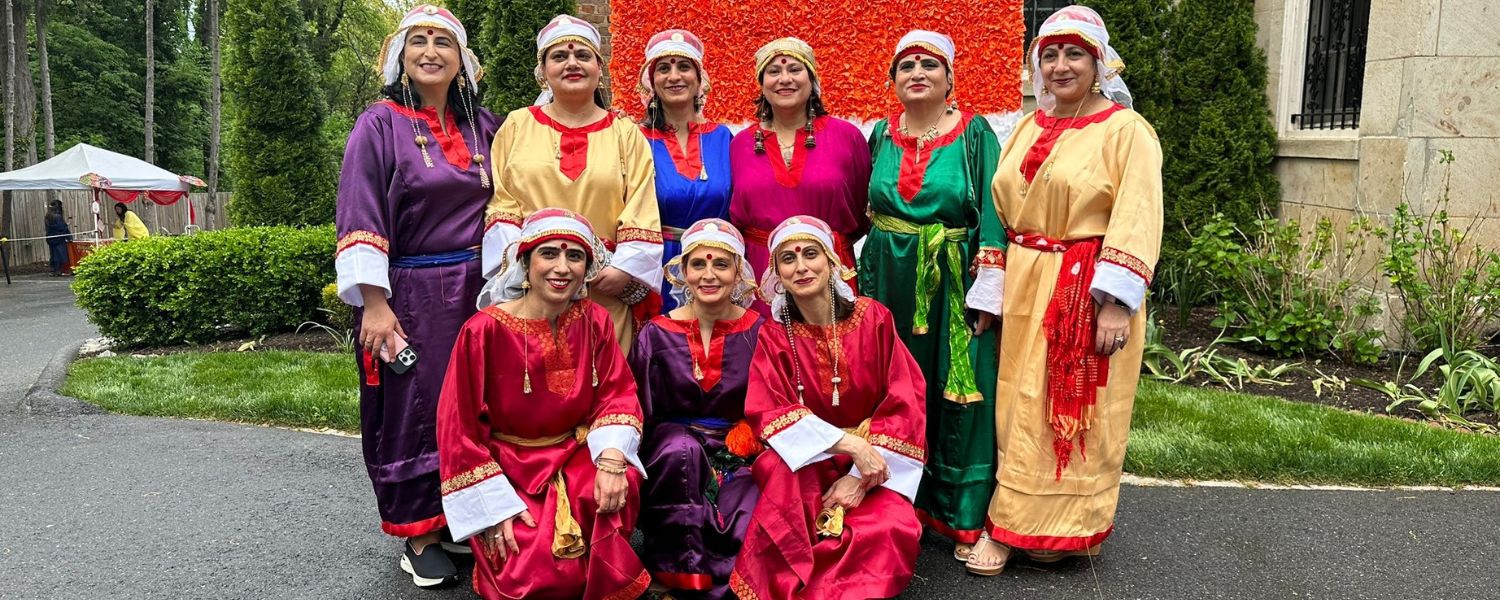
The traditional Kashmiri dressing style, known for its timeless elegance, features a distinctive array of garments that reflect the region’s rich cultural heritage. Among these, the Gurgabi stands out—a loose-fitting trouser paired with lace-less shoes, adding a touch of unique charm to everyday attire.
However, the true hallmark of Kashmiri clothing lies in its exquisite Cashmere wool products. Renowned for their luxurious feel and intricate embroidery, Kashmiri shawls are particularly celebrated. Crafted from the fine wool of Pashmina, sourced from native Ibex found at lofty altitudes, these shawls boast unparalleled softness and warmth.
Additionally, Ladakh produces Kashmiri shawls using Shahtoosh wool, derived from the rare Chiru antelope. Despite its opulence, the Shahtoosh trade faces a ban due to conservation concerns. Nevertheless, these treasures remain cherished tokens of affection, often exchanged as gifts among loved ones, perpetuating Kashmir’s enduring sartorial legacy.
3. Traditional Dress of Kashmiri People
The Pheran, worn by Kashmir dressing style for girl and boys alike, exudes a timeless appeal, seamlessly blending practicality with cultural significance.
Its intricate embroidery and vibrant hues reflect the region’s artistic prowess and love for beauty. Despite differences in religious dominance, the essence of Kashmiri attire remains unaltered, symbolizing a shared heritage and a deep-rooted sense of belonging.
Embracing the Kashmiri dressing style is not merely donning a garment; it’s an expression of reverence for tradition and an ode to the timeless allure of the Kashmiri culture, echoing through generations with unwavering pride and joy.
A. Pheran
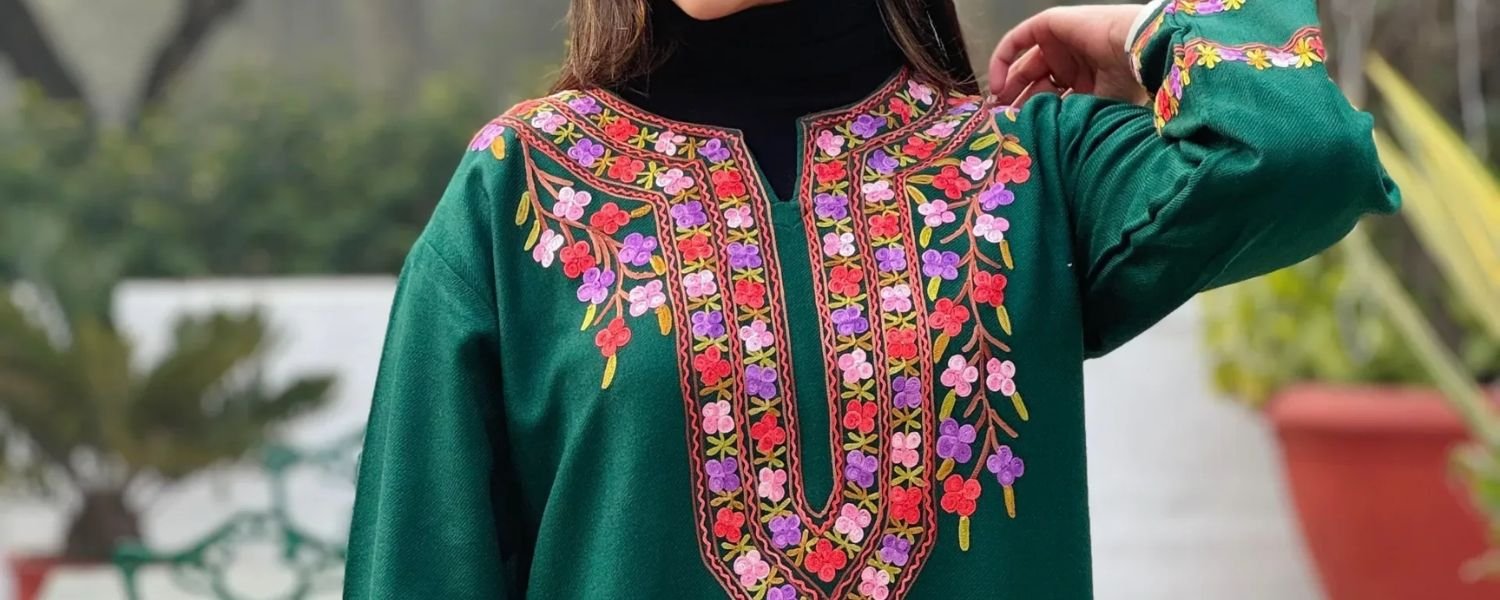
Kashmir’s dressing style encapsulates a rich tapestry of tradition and elegance, with the Pheran standing out as a quintessential garment. When encountering a Kashmiri woman adorned in this attire, one cannot help but be captivated by its grace and charm.
The Pheran boasts broad, flowing sleeves and intricate embroidery, a seamless fusion of Iranian and Indian influences. Typically, Hindu Kashmiri women don this garment, its length often extending to touch the feet and secured at the waist with the traditional Iihung.
Embellished with lavish brocade, the ensemble is incomplete without the Taranga, a headwear adding to its allure. Similarly, Kashmir dressing style male embrace their cultural attire, pairing the Churidar Pajama with a skull cap and shawl per the climate’s demands. This harmonious attire blend reflects not just a fashion choice but a celebration of Kashmir’s cultural heritage and identity.
B. Pathani Suit

Kashmir’s rich cultural heritage, the Pathani Suit, colloquially known as the Khan Dress in Jammu and Kashmir, stands as a quintessential attire for men, particularly prominent among the denizens of Srinagar.
This traditional ensemble often accompanies a turban, a common adornment among Muslim men, believed to offer protection. The Pathani Suit exudes an aura of regality, especially when paired with the distinctive Karakuli skull caps and shawls crafted from luxurious Pashmina wool.
These accessories not only add to the attire’s allure but also symbolize a sense of royalty and prestige. The intricate craftsmanship and attention to detail evident in the Pathani Suit reflect the deep-rooted traditions and sartorial elegance intrinsic to the Kashmiri dressing style, making it a cherished cultural emblem of the region.
4. Traditional Costumes of Kashmiri Folk Dancers
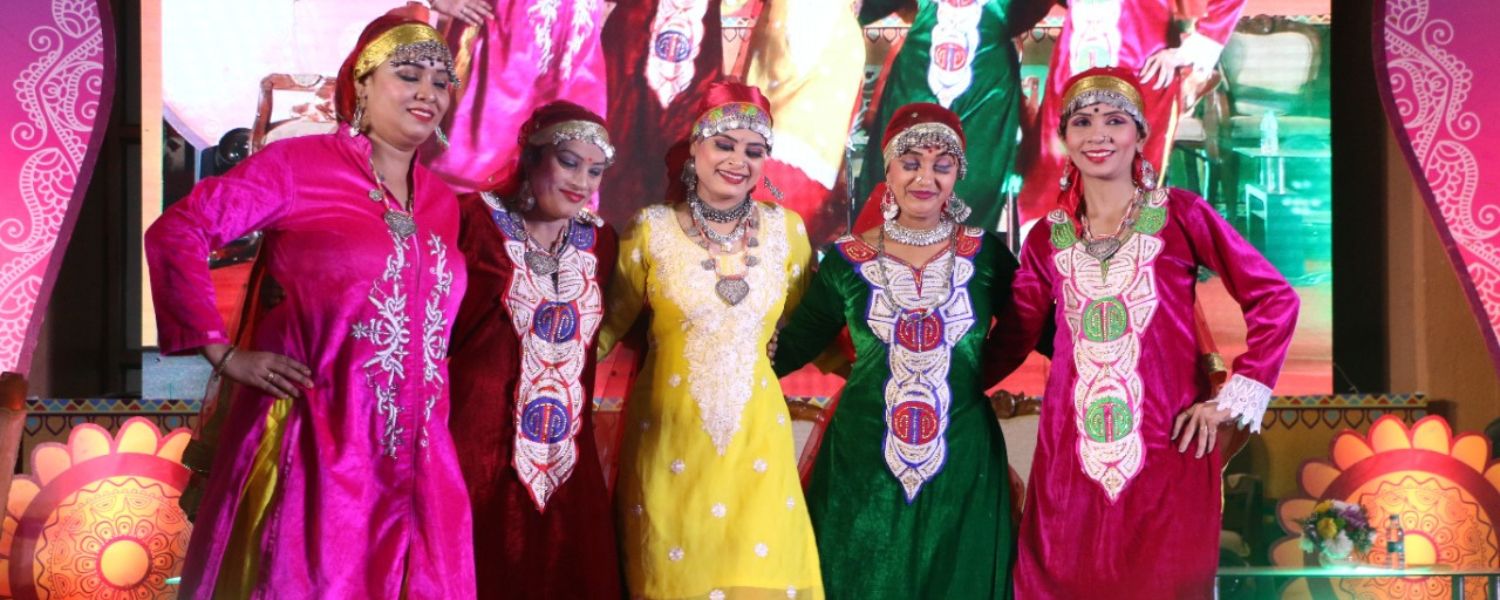
The quintessential Kashmiri dressing style for folk dancers includes vibrant colors, intricate embroidery, and luxurious fabrics. Men often wear the traditional “Phiran,” a loose, knee-length robe adorned with elaborate patterns, paired with tight-fitting trousers known as “Pijamas” and a turban or cap.
Kashmiri dress male and female grace the dance floor in the exquisite “Pheran,” embellished with intricate “Zari” work and accompanied by a matching headscarf or “Dupatta.”
The ensemble is completed with ornate jewelry, such as earrings, necklaces, and bangles, adding a touch of elegance and charm to their performance. These traditional costumes not only showcase the aesthetic appeal of Kashmiri culture but also preserve its rich legacy for generations to come to visit Jammu Kashmir monuments.
5. Accessories used by Kashmiri Women
A. Taranga
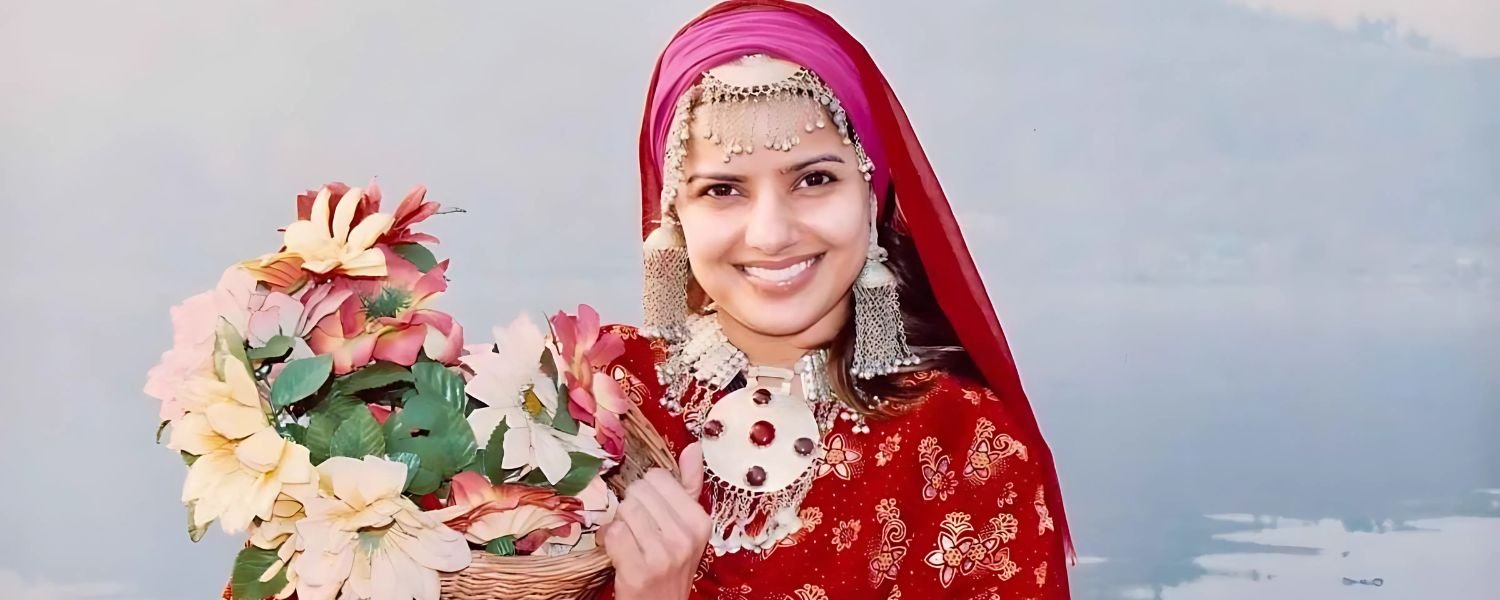
The Taranga emerges as a captivating emblem of tradition and beauty in the vibrant tapestry of Kashmiri dressing style. Worn predominantly by women, this colorful scarf is a cherished headdress synonymous with the region’s rich cultural heritage. Crafted intricately, it features a suspended cap and gracefully tapers down to the heels at the back.
Renowned for its elegance and significance, the Taranga holds a special place in Kashmiri weddings, transcending religious boundaries to adorn Muslim or Hindu brides. Its allure lies in its aesthetic appeal and deep-rooted symbolism, weaving together threads of tradition and celebration seamlessly.
B. Kasaba
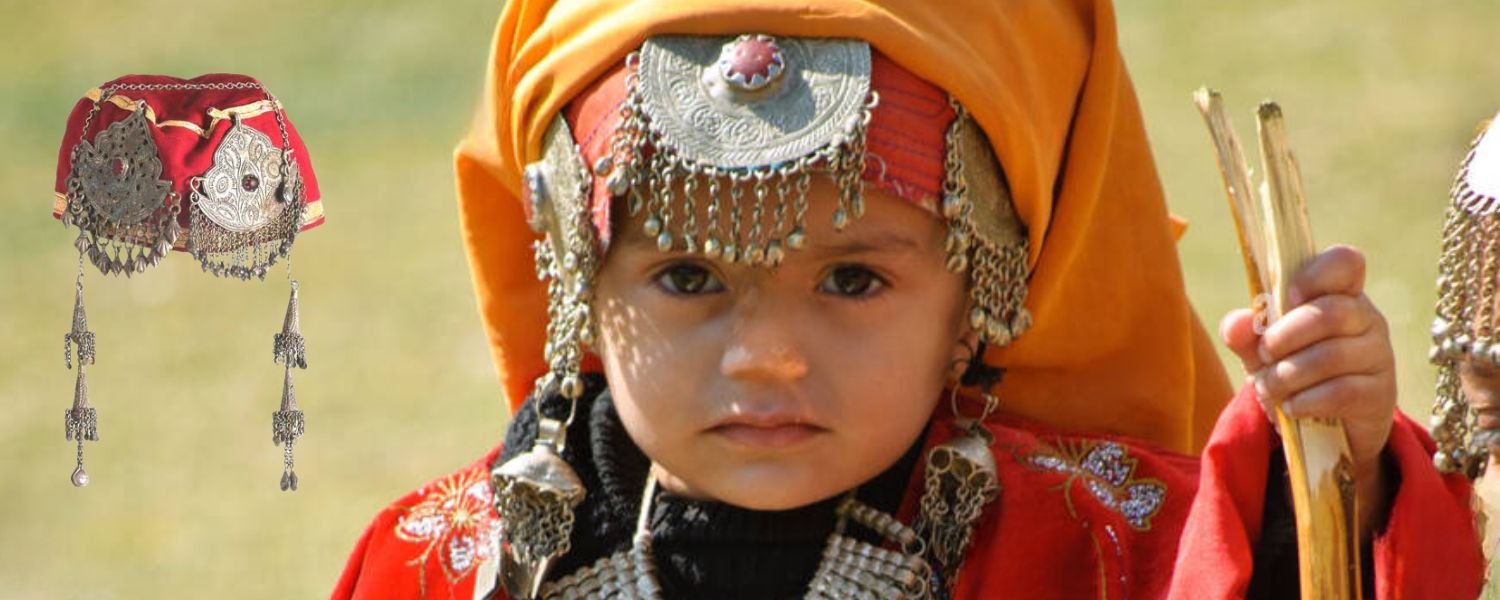
However, in the vibrant tapestry of Kashmiri dressing style, the Kasaba emerges as a distinct and culturally significant element, often paired with the traditional pehran. The Kasaba, a striking red headgear, adorns the heads of Muslim Kashmiri women, forming an integral part of their everyday attire.
Its intricate design, embellished with silver brooches and ornaments, sets it apart, especially compared to the Taranga. Alongside the pehran, the Kasaba is adorned with a delicate pink scarf gracefully draped over the shoulder. This ensemble not only reflects the rich heritage of Kashmiri culture but also embodies the elegance and tradition of its wearers.
C. Abaya
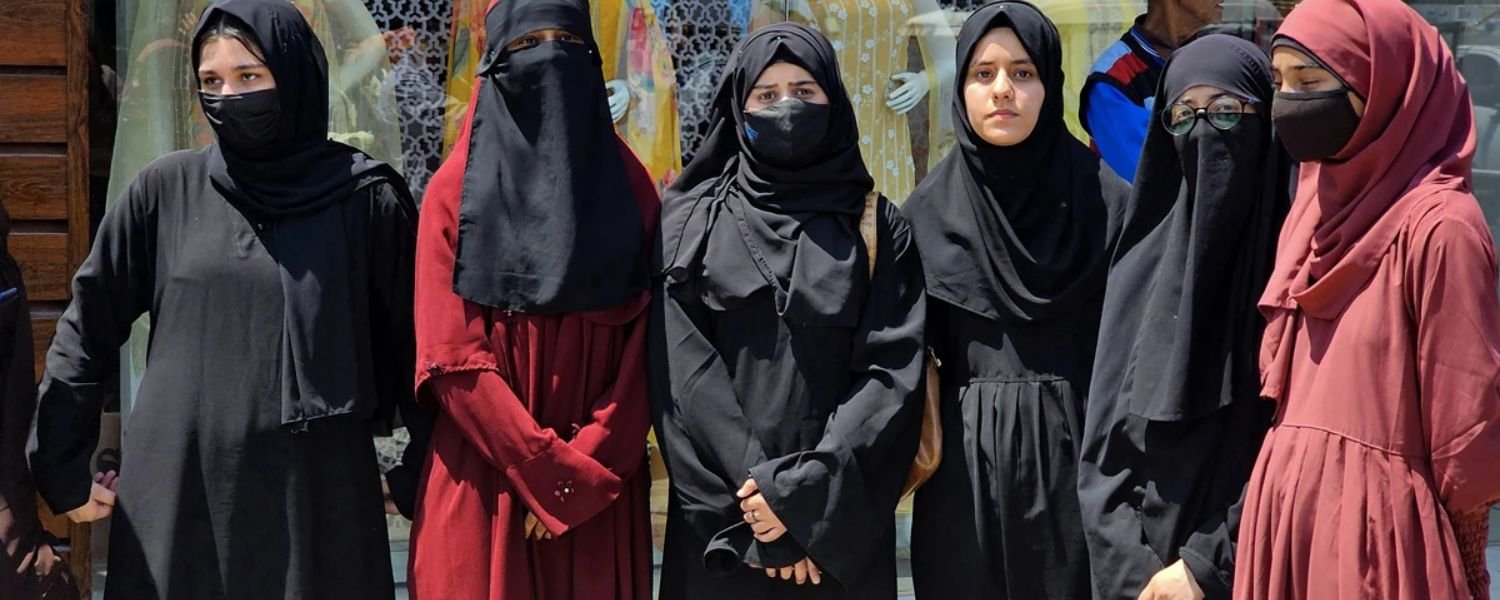
Embracing the rich cultural tapestry of Kashmir, the traditional attire of women reflects both modesty and elegance. Among these, the Abaya stands out as a symbol of grace and tradition.
Worn predominantly by unmarried Muslim women, the Abaya encompasses a spectrum of styles, each intricately crafted with ornate details. In contrast to the headscarf, ornate skill caps adorned with gold threads, gems, and talismans add a touch of luxury.
This attire exemplifies modesty and serves as a canvas for exquisite craftsmanship, showcasing Kashmir’s rich sartorial heritage. The Abaya embodies tradition and sophistication for those seeking to delve into the essence of Kashmiri dressing style.
6. Accessories used by Kashmiri Men
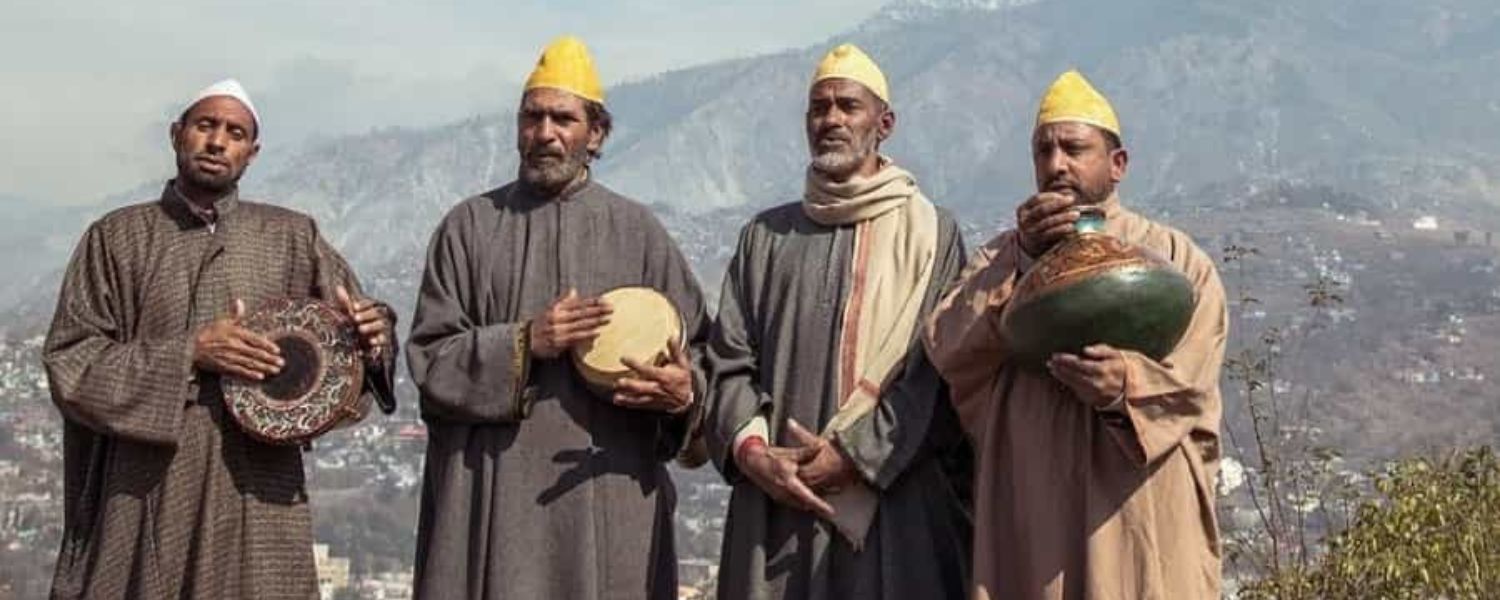
A. Headgear
Kashmiri’s dressing style and headgear are prominent, reflecting cultural diversity and traditions. For Kashmiri Pandit men, the turban symbolizes identity and dignity, adding a regal flair to their attire. On the other hand, Muslim men don the iconic skull cap, signifying their heritage and religious affiliation.
This distinctive headgear carries a legacy of tradition and reverence. Paired with Gurgabi shoes, a lace-free footwear choice, Muslim men complete their traditional ensemble with grace and elegance, showcasing the fusion of style and heritage in Kashmiri attire.
B. Jewelry
Kashmiri dressing style is a beautiful reflection of tradition and culture, adorned with exquisite jewelry pieces that hold deep significance. Beyond the ornamental adornments embellishing traditional attire, such as earrings, bangles, and anklets, one notable piece is the Dejharoos.
This golden pendant serves as the mangal-sutra for Kashmiri Panditani Hindu women, symbolizing their marital status. Crafted with intricate detail, the Dejharoos comprise two gold pendants connected by a gold chain and silk thread.
It’s not just jewelry; it’s a cherished emblem of matrimony, adding timeless elegance to Kashmiri attire. Explore the allure of Kashmir’s dressing style through these cultural treasures.
Conclusion
In conclusion, the Kashmiri dressing style is not merely a fashion statement but a profound reflection of the region’s cultural heritage and artistic prowess.
However, from the iconic Pheran to the intricate embroidery of Kashidakari, each garment embodies tradition and elegance. The allure of Kashmir’s dressing style lies in its ability to seamlessly blend practicality with aesthetic appeal, offering a timeless charm that transcends generations.
Whether the vibrant Taranga headscarf or the regal Pathani Suit, every element of Kashmiri attire carries a story of tradition and pride.
Additionally, as one delves into the tapestry of Kashmir’s dressing style, one uncovers a treasure trove of cultural significance and sartorial excellence, where every stitch to the region’s enduring legacy of craftsmanship and beauty. Embrace the enchanting allure of Kashmir dressing style, where tradition meets timeless elegance in a celebration of culture and identity.
FAQ
Q. What type of clothes are worn in Kashmir?
A. However, the Kashmiri attire for women distinguishes itself from mainstream Indian clothing. In summers, women opt for a Salwar-kameez, Suit, or Abaya with a headscarf, while in winters, see the iconic Pheran paired with shawls. Both Muslim and Pandit women flaunt the Kasaba in a unique style.
Q. What is the traditional dress of Kashmir?
A. Pheran, worn by both genders, is the quintessential Kashmiri attire. Consisting of two gowns layered over each other, the traditional Pheran historically extended to the feet, a style prevalent until the late 19th century C.E.
Q. What is the style of Kashmir?
A. However, the hallmark of the Kashmiri dressing style is the intricate Kashidakari embroidery adorning garments. Further, the unique Taranga headscarf further accentuates the attire, adding to its charm.
Q. What is Kashmir famous for?
A. Besides its scenic beauty, Kashmir is renowned for its skilled craftsmanship, including Pashmina shawls, silk carpets, rugs, and pottery. Srinagar shines for its silver-work, wood-carving, and fine silk weaving.










